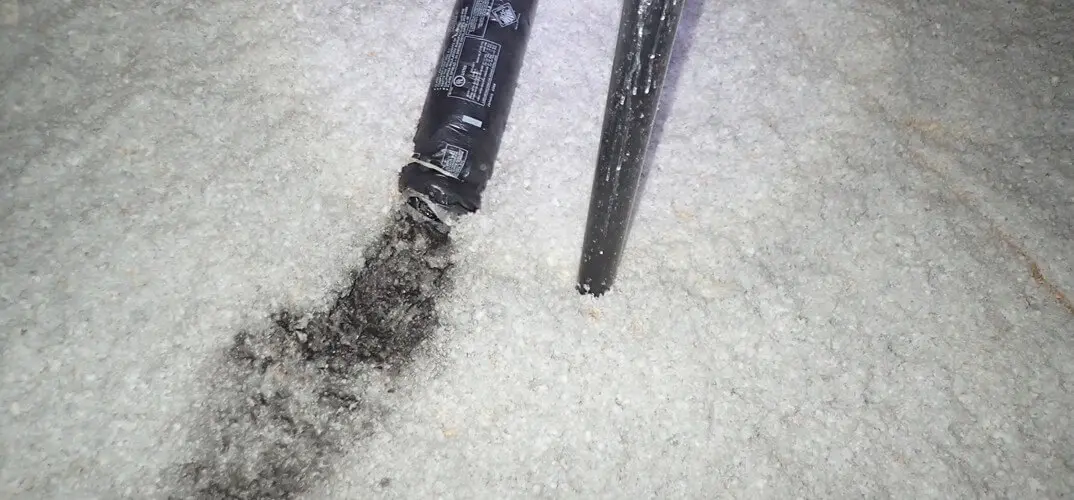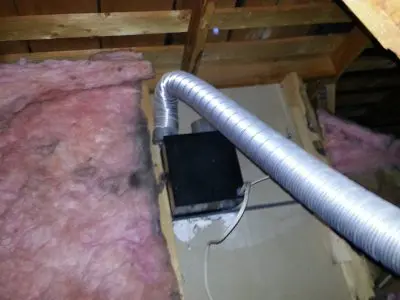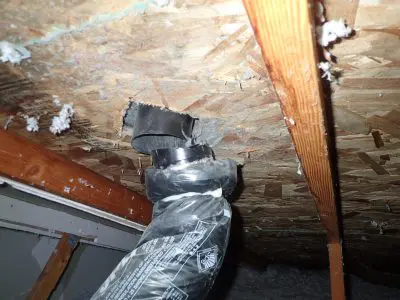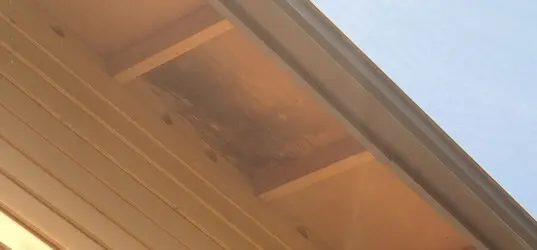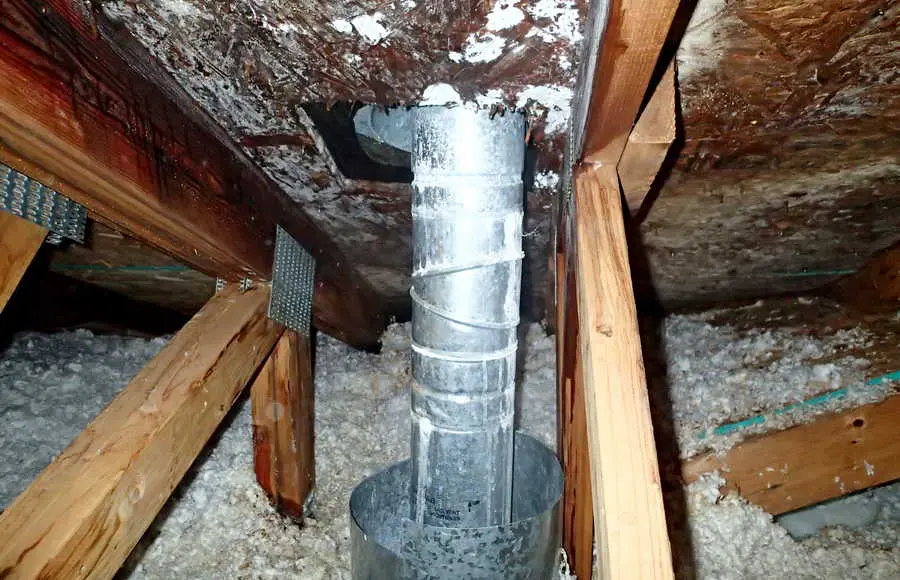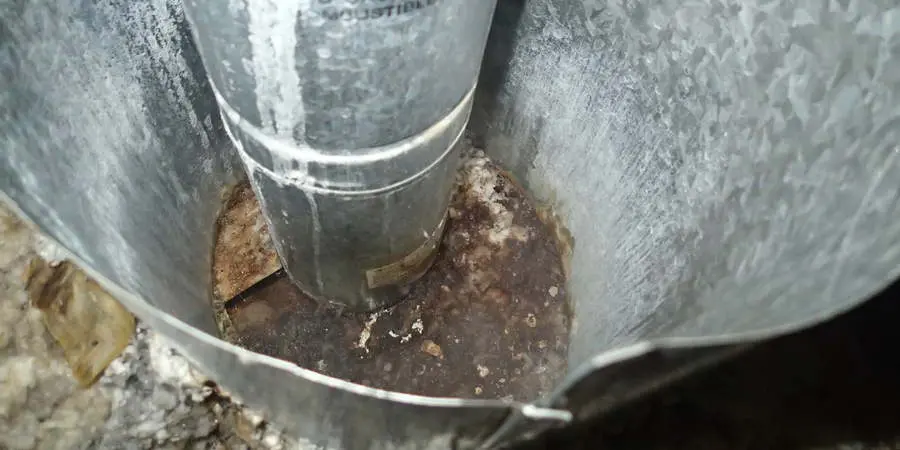Disconnected Ducts & Attic Mold
Disconnected, broken and improperly installed ducts are a major cause of sheathing degradation and mold growth. The reason is straightforward. If an exhaust duct is disconnected, all the warm, humid air from the house is pumped directly into the attic. This moisture condenses on the cool roof sheathing and eventually causes mold growth and sheathing failure.
If the problem is severe and the attic has a compounding problem, such as poor ventilation, the moisture buildup can occur throughout the entire attic assembly. This often occurs in houses with poor passive ventilation in the roof. Focused mold and moisture. In many cases, the faulty ducting effects only the area immediately surrounding the disconnected duct. Both moisture and mold growth will be limited to 5-10 sqft. area above the defective ducting.
Common failure points for ducting in an attic.
Disconnected at the bath fan
This is a common issue with older fans. If the fan is connected only using duct tape, a minor bump will dislodge the duct from the base unit. Clearly, this will introduce a lot of moisture into the attic space. We recommend screws (make sure they don’t hit the flapper), zip ties and foil tape.
Partially disconnected at the roof junction
This is a bit less common, but it certainly occurs. If only duct tape is used to secure the ducting, gravity will quickly take over and detach the ducting. Instead this should be secured with screws and duct/foil tape and a zip tie. Care must be taken to avoid placing a screw in the path of the flapper, which can inadvertently pin the flap in the closed position.
Directed at soffit vents instead of dedicated roof vent
Ducting a bathroom exhaust fan through the roof can be a pain. The contractor must install a collared roof vent from the topside of the roof, then go back into the attic and connect the ducting. This is unlikely to occur when the new fan is installed by an electrician. Ducting an exhaust fan through a soffit vent presents a couple of challenges.
First, soffit vents don’t have 4″ collars, so the connection is never tight. The ducting is simply pointed toward the soffit vent. A minor bump from a subsequent contractor and the ducting is no longer directed outside. Second, soffits are already prone to mold growth. The receive minimal air flow and zero sunlight. Adding warm, moist air to the mix and you’ve got a very high likelihood for mold growth.
Poorly connected furnace exhaust duct
Furnaces, like any combustion, produce a significant amount of water. If the exhaust ducting is not tightly connected this moisture laden air can cause heavy condensation on the attic sheathing. Below is an example of intense condensation. In this case the moisture buildup was severe enough to cause dripping onto the insulation and sheetrock below.
Notice in the photo below how the water dripped down the duct and damaged the surrounding insulation and ceiling. This occurs when the warm, moist exhaust air from the furnace interacts with the cold roof sheathing. Condensation forms and in severe cases, begins dripping.
Unusual ducting cases:
Though perhaps a bit counter intuitive, the mold growth on the sheathing may not occur at the point of highest moisture saturation. Notice how the space immediately surrounding the poorly connected exhaust duct actually contains much less mold growth than the surrounding areas. This is due to the temperature of the exhaust air. When a bath fan is turned on during shower usage, the outgoing air is warm enough to raise the surface temperature of the roof sheathing to a level beyond the dew point. As the air moves away from the ducting, it quickly cools and begins to condense on the surface of the sheathing.
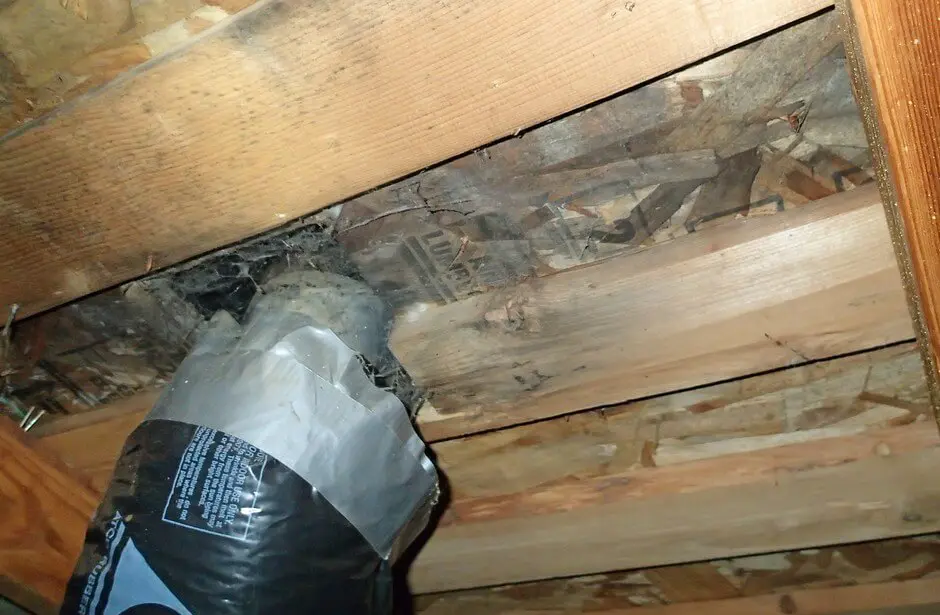
Mold on Sheathing due to poor ducting.
What other types of attic duct problems can occur?
- Faulty supply ducts. If a supply duct is broken or disconnected, warm, moist air from the furnace can escape directly into the attic.
- Faulty cold air return. This is a much more common scenario, as most homes with forced air systems locate the supply ducts in the crawl space and return ducts in the attic. If a return duct is damaged, air from the attic can be pulled directly into the HVAC system. This air can bring along many undesirable particulates, such as mold spores, fiberglass insulation, rodent odors, etc.
Photos of how not to install exhaust ducting
At the risk of stating the obvious, these photos represent how not to install attic ducting. The first image highlights several problems. First, they used dryer ducting. Not only is this far less durable than standard exhaust fan ducting, it is uninsulated. Second, the ducting exits the fan vertically then turns back down and exits the house through a soffit vent. Not good. Third, the ducting is attached with duct tape. Bathroom exhaust fan ducting should be installed with heavy duty zip ties, foil tape and sheet metal screws.
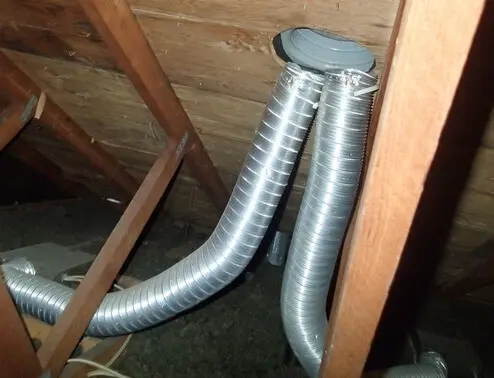
Poorly installed fan ducting
Don’t use dryer ducting
Ducting intended for clothes dryers is uninsulated, which can cause condensation. Also, the metal versions of the product crush easily, as seen below.
*Heads up – I earn a small commission on sales through Amazon links. This helps cover the expense of running the website (and answering your questions!)
Got a question? Ask it here and we'll post the answer below
I just had a home inspection and a disconnected kitchen flue was discovered in the attic. Who do I call to fix this?
It’s typically done by either a handyman or an HVAC technician. Make sure they follow the code requirements (rigid metal ducting, size must be equal or greater than the port on the kitchen range hood, etc.)

